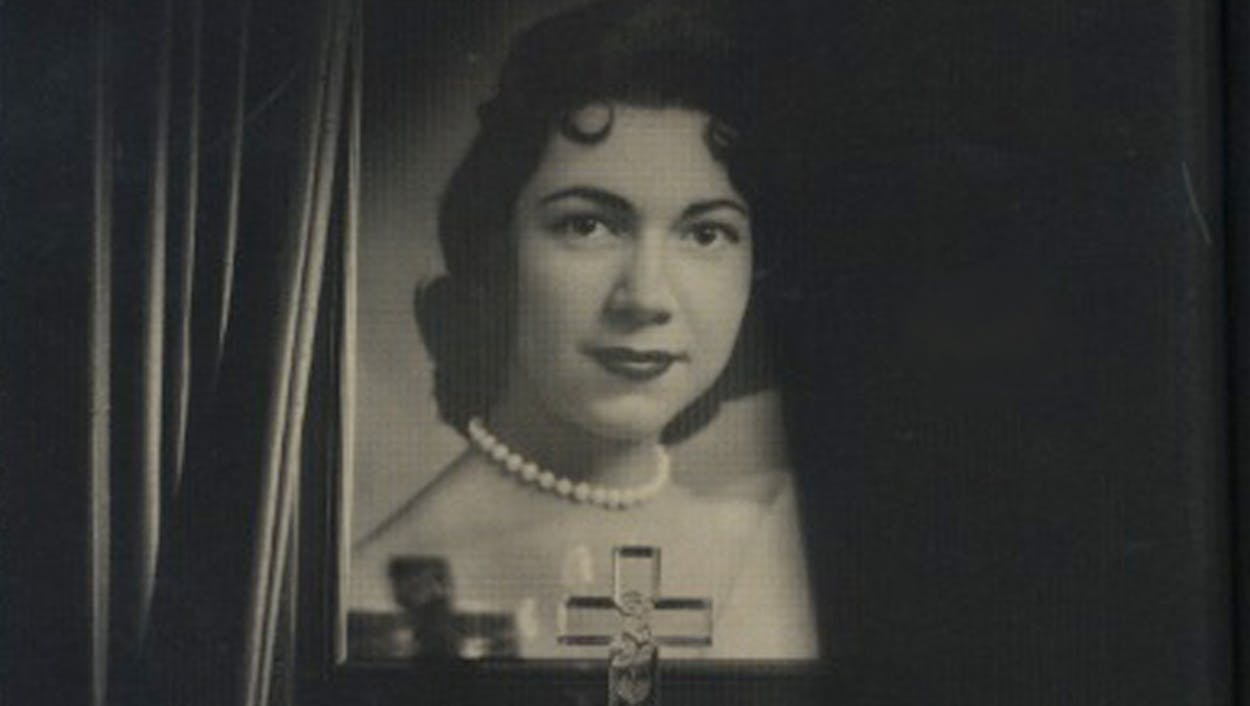For more than half a century, the unsolved murder of Irene Garza has haunted McAllen. Since the day her body was pulled from an irrigation canal in 1960, there has been only one suspect: John Feit, the priest who heard her final confession. Yet despite ample incriminating evidence, Feit escaped prosecution. He later left the priesthood and settled down in Arizona, where he raised a family and lived a quiet life. After two stalled investigations into the murder and stonewalling from longtime Hidalgo County DA Rene Guerra, most people assumed Feit would never be charged. Then, Tuesday night, Feit—who is now 83 years old—was arrested for Garza’s murder, and is now awaiting extradition from Arizona to Texas.
The remarkable turn of events is due to the determination of Hidalgo County’s new DA, Ricardo Rodriguez, who made finding justice for Irene a centerpiece of his 2014 campaign. Rodriguez, a former district judge, challenged Guerra—who had been DA for more than three decades—and won. With the support of Irene’s family, Rodriguez moved forward with a wholesale re-investigation of the case. He has not disclosed whether any new evidence led to Tuesday night’s arrest.
As I recounted in my 2005 story on the case, Irene led a short but remarkable life. At McAllen High School, she was the first Hispanic twirler and head drum majorette. She was the first person in her family to attend college and graduate school. A former prom and homecoming queen at Pan American College, she was crowned Miss All South Texas Sweetheart 1958. At the time of her death, she was a schoolteacher who worked with McAllen’s poorest children. She spent her first paycheck on them, buying them books and clothes.
On April 16, 1960, Irene borrowed the family car to drive to Sacred Heart Church, where she planned to go to confession. The next morning, Easter Sunday, her car was still parked down the street. Four days later, her body was found floating in a nearby canal. An autopsy determined that she had been bludgeoned and suffocated. According to her death certificate, she was raped while in a coma.
The exhaustive investigation that followed turned up one suspect: Father John Feit. The 27-year-old priest admitted that he had heard Irene’s confession that evening, and that he had done so in the privacy of the rectory rather than the confessional. Another priest, Father Joseph O’Brien, reported seeing conspicuous scratches on Feit’s hands after midnight mass. When investigators dragged the portion of the canal where Irene’s body had been dumped, they found an Eastman Kodaslide viewer with a black cord—long enough to have bound together Irene’s hands—which belonged to Feit.
Detectives also discovered that a priest who fit Feit’s description had attacked a young woman named Maria America Guerra inside a church in Edinburg two weeks before Irene’s disappearance. Feit flunked a subsequent polygraph test which “definitely implicated him in both crimes,” read the report. “The subject was not telling the truth when he denied killing Irene Garza or attacking Maria Guerra.” Feit pleaded no contest to charges of aggravated assault in the Guerra case, but never served jail time. And that was the end of that. No charges were ever filed against him for Irene’s murder.
Many people in McAllen wondered whether a deal had been struck between the church and the DA’s office, or if elected officials in the overwhelmingly Catholic town were afraid to challenge the church. As Irene’s aunt, Herlinda de la Viña, told me in 2005, “Who were we to question a priest?”
The Texas Rangers’ cold-case unit reopened the case four decades later, in 2002, and turned up even more damning evidence. A former priest from Oklahoma City named Dale Tacheny came forward to say that Feit had detailed the crime to him when they lived in a Trappist monastery in Missouri in the sixties. According to Tacheny, the priest said that he had assaulted, bound, and gagged a woman after hearing her confession. Later, he put a bag over her head, suffocated her, and dumped her body by a canal. The Rangers also interviewed Father O’Brien, who said he had important information about the case that he would divulge if, and only if, he were brought before a grand jury.
But that never happened. Longtime Hidalgo County DA Rene Guerra refused to take the evidence that the Rangers had amassed to a grand jury, citing it as insufficient. Without DNA or a confession, Guerra said, he could not take such an old case to trial. Under pressure to do more, he presented the case to a grand jury but never called Tacheny or O’Brien. The grand jury declined to indict Feit in 2004, and so the case once again hit another brick wall. Father O’Brien died in 2005, and most people assumed that Feit would never be charged. Then came his arrest Tuesday night.
Can Rodriguez win a conviction in a case that is now 56 years old, and whose star witness—Dale Tacheny—is in his eighties? It remains to be seen whether justice will finally be served for Irene, or whether Feit, who is currently sitting in a Scottsdale, Arizona jail cell, can outrun the clock.







